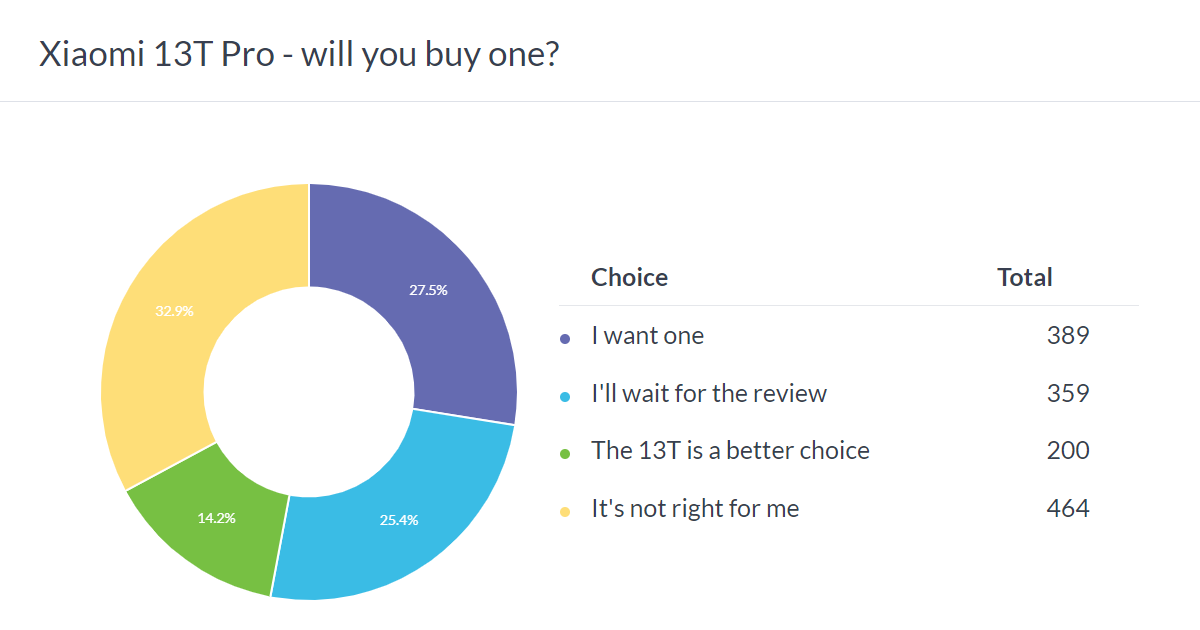
Based on last week’s poll 22% of people feel that the €150 premium for the Xiaomi 13T Pro is well worth it for the additional features over the vanilla 13T. That is not to say that the vanilla phone is undesirable, of course.
However, the Xiaomi 13T needs good reviews because right now there is a nearly even split between people who are ready to buy one and people who are holding off to see how the phone performs in testing. Our review is on the way, so stay tuned.
Comparing the two models shows that the Pro model has a faster chipset (Dimensity 9200+ vs. Dimensity 8200 Ultra) and that comes with 4 extra gigs of RAM in the base configuration. On top of that, there is faster charging support (120W vs. 67W), so a full charge takes less than half as long (19 minutes vs. 42 minutes). For more on the advantages of the Pro model, check out our Xiaomi 13T Pro review.
These things make the Xiaomi 13T Pro the more sought after model – not by much, but there is a clear difference in the charts. The Pro got compared to the Redmi K60 Ultra in the comments, however, that is a China-only model that you can’t get without a gray import, you will also have to flash a new ROM on it and you will lose the manufacturer support too.

This segues into a different discussion that was going on in the comments – it feels like the 13T series is missing a model. Something smaller than the 6.67” 13T and 13T Pro, which are 75.7mm wide and weigh around 200g.
Having mentioned support, Xiaomi upped its game and matches Samsung on OS and security updates. Some still scoff at MIUI, but this is a win for Xiaomi software nevertheless. The two phones also have full IP68 rating, unlike the 12T models (the Pro had IP53, the vanilla model was not rated at all).
Finally, the success of the Xiaomi 13T and 13T Pro will vary by region. In some countries these two have killer prices that undercut the competition, in others not so much.




